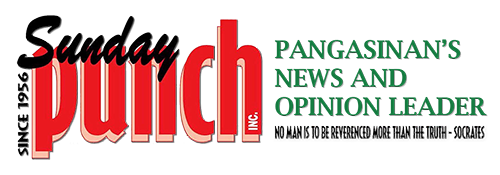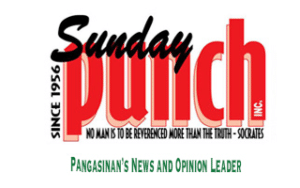Think about it
Pangasinenses, take a bow
By Jun Velasco
THERE are no takers (almost) for Antonio Margarito in today’s much-awaited showdown in Las Vegas starring himself and our very own Manny Pacquiao.
Boxing fans go for the skillful, smart and fair fighter, not the below-the-belt and brute force villain.
So the show would be in what round the hero — Congressman Pacquiao — would vanquish the villain. Maybe, it’s more fun viewing the fight in another country, not here that roots for a brother who, aside from his pugilistic skills, is a legislator, singer and a movie star.
But hey, life isn’t life if there’s no possibility of an upset. So let’s watch it. Jess Garcia is dating us for it at Manny Aoanan’s Time Machine Resto Bar. See you there.
* * *
IF you look at the map of the Philippines, you tend to liken the province of Pangasinan to that of California in the United States.
Big, gifted with a temperate climate (minus the occasional floods worsen by the Agno River), rich in national resources, and populated by hard-working and peace-loving Pangasinenses.
The lamented charge that the province lacked patriots or nationalists in the days of yore because it didn’t figure in the eight rays of the sun in the Philippine flag is easily contradicted by the fact that when Jose Rizal and Bonifacio were still unheard of (Rizal was born in l861), the Spanish colonizers were already having a tough time quelling Andres Malong’s revolt of l660 or the Palaris rebellion of 1762.
It’s clear, therefore, that the original resistance staged by two San Carlenians (Andres Malong and Juan dela Cruz) antedated the ballyhooed advent of Philippine nationalism – the so-called golden age of the archipelago of Rizal, his fellow propagandists and the actual insurrection led by Bonifacio and Aguinaldo of 1896.
When we pointed this out to the erudite man of letters Adrian Cristobal, when he was still alive, he humorously commented, “wala pang pr man si Malong at si Palaris.”
Let’s credit Columnist Gonzalo Duque’s Pangasinan Historical Institute for its newfound verve – unearthing literally — golden facts about this premier province.
Is it possible that the first mass ever held in the islands under the aegis of the Spanish colonizers was held in the town of Bolinao and not, as Zaide and other historians claimed, in the little island of Limasawa in Samar? Let’s wait for Ms. Arabelle Arcinue’s finding on this, because if true, then we would be on the forefront of a rewriting of Philippine history, thanks to this baby — the historical institute –of Gov. Amado Espino.
When Oscar Orbos was Pangasinan governor, we had spirited conversations about pre-Spanish trade between Sual and China. It was on that account that he envisaged a grand revival of that trade in light of China’s emergence as the new world power and Pangasinan’s strategic geographical location.
Recent events that saw Governor Espino signing linkup agreements with Korea and Taiwan are curtain raisers to a Pangasinan International Inc. treatise.
In a recent book, “Teamwork for Enduring Peace and Sustainable Development,” former President Fidel V. Ramos describes the province “a microcosm of the Philippines because it easily represents the valuable potential of the country’s strategic location in Southeast Asia, abundance of natural resources, and availability of quality manpower.”
In that book authored by Mel Velasco, FVR He cites Pangasinan’s “hardworking people, bountiful land and seas, central location vis-avis markets, and a proud history of revolutionary struggle and achievement, it boasts of being a leader in education, water conservation and power generation.”
The San Roque Multipurpose Dam Project in San Manuel town Is “the largest man-made structure for freshwater capture in Southeast Asia… equivalent to a 44-stortey building… which provides irrigation for at least 87,000 hectares of farmland.
FVR also pays homage to the coal-fueled Sual Power Plant that reduces the province’s dependence on other petroleum products.
The war on illegal structures in the Agno River and its tributaries was actually started way, way back by Espino when he was still provincial police director. He has stuck to it to save, preserve and animate marine life in the province.
Under Espino, tourism in the province – with Mayor Nani Braganza’s beachhead projects — has dramatically gained a headway, with no less than the provincial capitol and the entire compound rehabilitated if not reconstructed in resplendent beauty.
A chat with paranormal researcher-writer Jaime T. Licauco has unraveled heretofore mystical facts about the province as the seat of Limuria that, he says, has sired the famous spiritual healers of yore and the legendary cosmopolitan nature of Pangasinenses.
A unique people who are neither the sun-beaten frugal Ilocanos or the extravagant Kapampangans the people of Pangasinan are the intuitive pragmatists who excel in the arts and the professions like their birthright.







